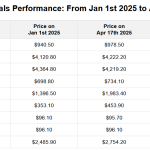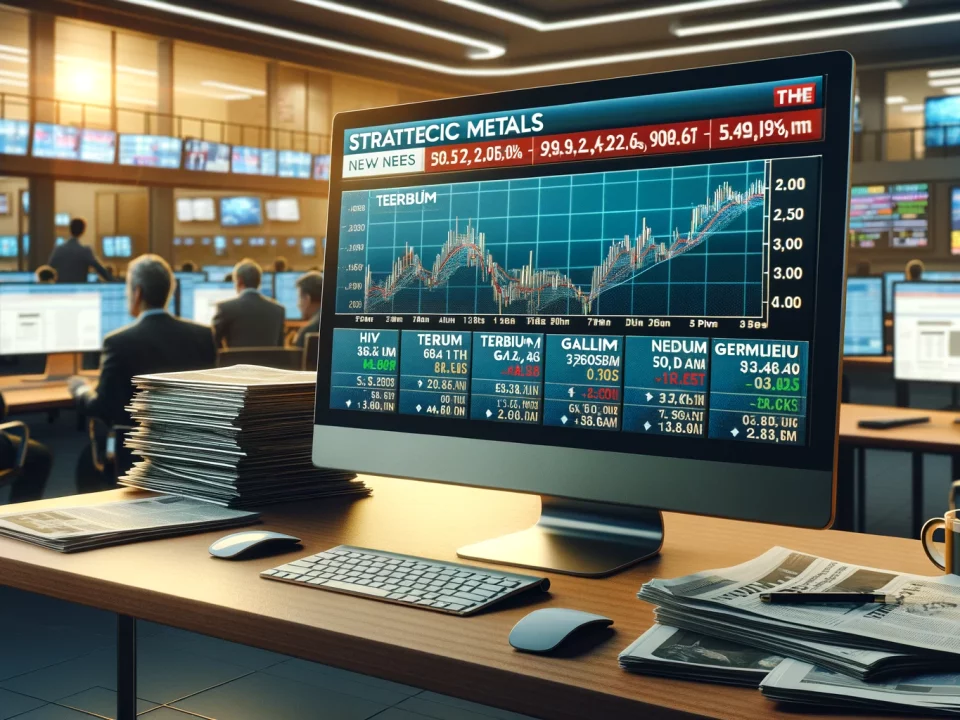
China’s Rare‑Earth Clampdown
April 18, 2025
Weekly News Review April 21 – April 27 2025
April 27, 2025Once again, geopolitics stood center stage this week. While China published March export data on rare earths, U.S. President Donald Trump put critical minerals at the center of attention through an executive order. Similarly, we shed light on China’s recent export controls.
CHINA: RARE EARTHS EXPORTS RISE IN MARCH –
China’s Customs Authority has released March trade data, revealing a notable increase in rare earth exports by the world’s leading producer. According to the report, China exported 5,666.3 tons of rare earths in March—an increase of approximately 20% compared to last year.
On the import side, however, rare earth shipments into China plummeted by 42.2%, likely due to supply disruptions in Myanmar. The ongoing civil war and a recent earthquake have severely hampered mining activities there. Myanmar remains one of China’s most critical raw materials for rare earth materials.
April Data Will Clarify the Underlying Reality:
Looking at general trade data, China’s overall exports rose sharply in March. Citing official data, Reuters reported a year-on-year increase of over 12%, which analysts attribute to a “pre-tariff rush. ” Exporters likely rushed out products ahead of the United States’ sweeping reciprocal trade tariffs, which came into effect in early April. Under the policy, China faces the steepest rate of 145 percent.
China has responded to the measure with its tariffs and imposed export controls on 7 17 rare earth elements (we reported). The export controls came into effect in early April, and data for the month will reveal whether the exports spiked briefly or are part of a more sustained trend.
UNITED STATES EYES DEEP SEA-MINING TO BOLSTER STRATEGIC METALS RESERVES –
The U.S. government is reportedly preparing an executive order to stockpile critical metals sourced from the Pacific Ocean seabed. According to the Financial Times (paywall), which cited individuals familiar with the matter, these resources—including nickel, cobalt, and rare earth elements—are intended to supplement the nation’s existing petroleum and metal reserves.
Deep-sea mining remains a highly controversial topic. Numerous countries, including Germany, advocate for a moratorium on this resource extraction until its ecological impacts on marine ecosystems are better understood. Meanwhile, others, such as the U.S. and China, are pressing ahead with deep-sea mining initiatives. These latest U.S. plans are seen in the broader context of strategic rivalry between the two global powers.
Washington has long sought to reduce its heavy dependence on Asian mineral imports, particularly from China. Just days ago, Beijing imposed tighter export controls on certain rare earth elements—seen as a countermeasure to the sweeping U.S. import tariffs. Deep-sea mining, some argue, is a logical step for the U.S. to keep pace with China in the global race to explore the Pacific’s resource-rich seabed. The Financial Times quoted Alexander Gray, an Asia expert and former official in the first Trump administration, who described the initiative as a strategic move.
However, industry experts remain skeptical. They argue that the real bottleneck isn’t access to raw materials but the lack of domestic processing capacity. “Stockpiling unrefined materials doesn’t strengthen America’s supply chains or its defense industry,” wrote Ashley Zumwalt-Forbes, former deputy director for batteries and critical materials at the U.S. Department of Energy, in a social media post.
IS STRATEGIC METALS DEPENDENCY A THREAT TO US NATIONAL SECURITY? PRESIDENT TRUMP ORDERS INVESTIGATION:
Commerce Secretary Lutnick was tasked with reporting on critical resource supply chains and domestic production potential.
The supply of critical raw materials to the United States is again in the spotlight. On Tuesday, President Donald Trump signed an executive order to investigate whether the country’s heavy reliance on imports of strategically essential minerals threatens national security. According to the order, foreign producers have engaged in price manipulation, overproduction, and arbitrary export restrictions—using their dominance in global supply chains to exert geopolitical and economic influence over the United States.
Commerce Secretary Howard William Lutnick has been given 180 days to deliver a comprehensive report. The review will assess supply chain vulnerabilities, evaluate domestic downstream industrial capacities, and recommend potential countermeasures. Punitive tariffs on specific resource imports are among the options under consideration.
U.S. Dependency on China Under Scrutiny:
The investigation will cover all 50 minerals currently classified as critical by the U.S. Geological Survey. China is the leading producer of most of these materials, and many U.S. companies heavily depend on Chinese imports. This move is widely interpreted as the latest development in the ongoing trade tensions between the world’s two largest economies. Just days ago, China responded to newly announced U.S. tariffs by imposing export controls on seven rare earth elements.
The issue of import dependency isn’t new. Under the previous administration, the Commerce Department had already investigated the United States’ reliance on rare earth magnets. Rather than recommending tariffs, the department advised then-President Joe Biden to boost domestic production through financial incentives.
FIGURE OF THE WEEK: 10 – MORE THAN 10% OF THE CURRENT GLOBAL SUPPLY OF GALLIUM WILL BE NEEDED FOR AI ALONE BY 2030.






